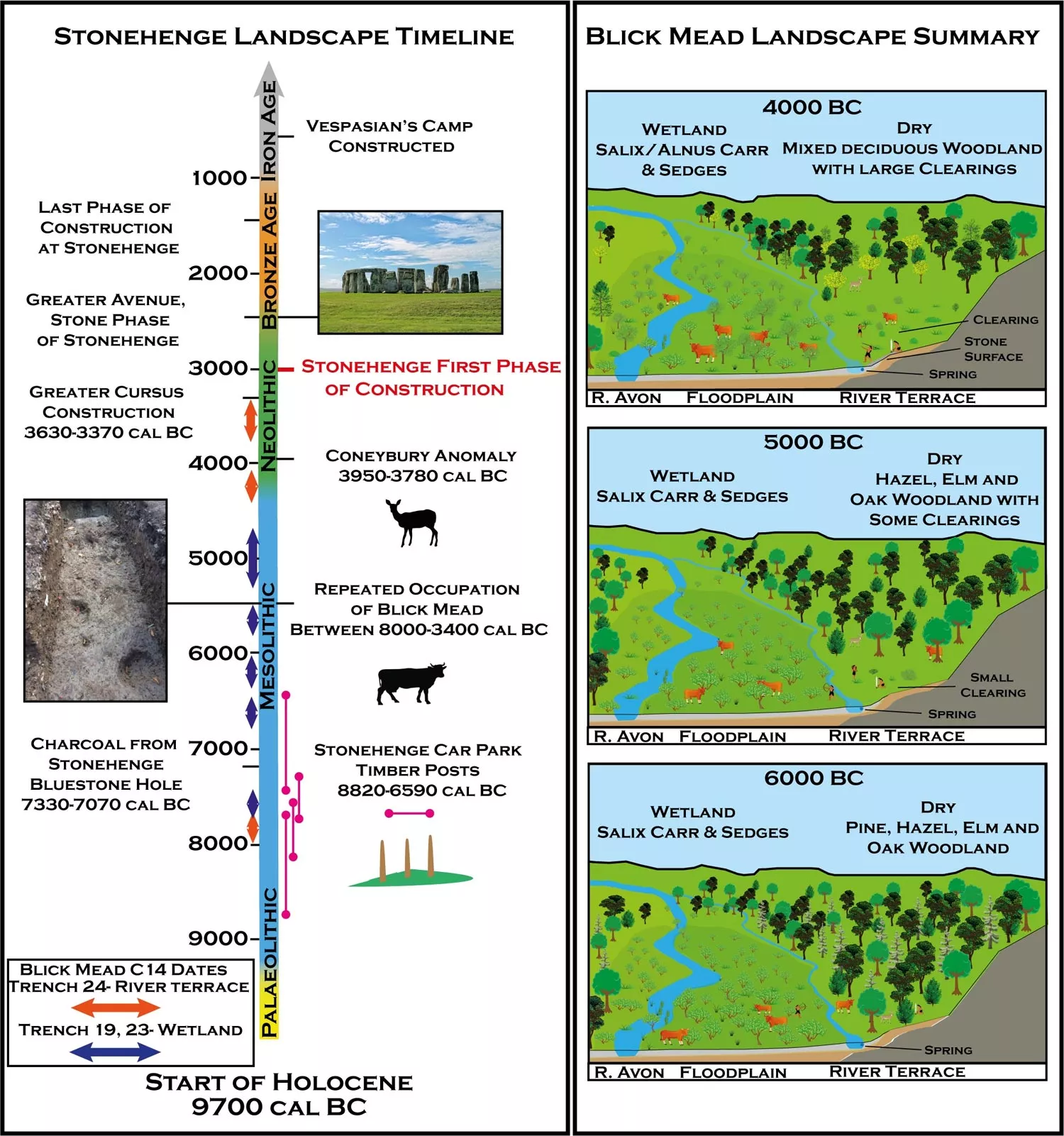A study by Samuel Hudson of the University of Southampton and his colleagues showed that hunter gatherers had been using open woodland conditions for thousands of years before the Stonehenge monument was built It is reported that the study was published in the open journal PLoS One on April 27 local time.
Many studies have explored the history of the bronze age and Neolithic Age in the area around Stonehenge, but little is known about the earlier times in this area. This leaves questions about how ancient people and wildlife used the area before building famous archaeological monuments. In this new paper, Hudson and his colleagues reconstructed the environmental conditions of Blick Mead, a pre Neolithic hunter gatherer site on the edge of Stonehenge World Heritage site.
The researchers combined pollen, spores, sediment DNA and animal remains to describe the site's pre Neolithic habitat and extrapolated that to partially open woodland conditions, which are beneficial to large herbivore and hunter gatherer communities. This study supports previous evidence that the Stonehenge area was not covered by closed canopy forests at this time, as previously proposed.

The study also provides an estimate of the date of brickmead's human activities. The results show that hunter gatherers have used the site for 4000 years until the earliest known farmers and monument builders in the area appear, and they will also benefit from the space provided by the open environment. These results suggest that the earliest farmers and monument builders in Stonehenge encountered open habitats that had been maintained and used by large herders and early humans.
Further study of similar sites will provide important insights into the interaction between hunter gatherers and early agricultural communities in the UK and elsewhere. In addition, the study provides techniques for combining sedimentary DNA, other ecological data and stratigraphic data to explain the ancient environment at a site where it is difficult to assess such information.
The researchers added: "Stonehenge World Heritage site is recognized globally for its rich Memorial Landscapes of the Neolithic and bronze age, but little is known about its significance to the Mesolithic population. Brickmead's environmental research shows that hunter gatherers have selected part of this landscape, an alluvial clearing, as a lasting place for hunting and occupation."